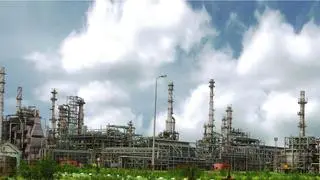Toyota's move to build a low-cost car in Indonesia with subsidiary, Daihatsu, could be part of a bigger plan to leverage the Etios platform across the Asean region.
The car is scheduled for launch in 2013 which is around the same time when another product from the platform will debut in Thailand as part of the Eco Car project. In the process, India along with Thailand and Indonesia will emerge the three key pillars of Toyota for the Asia-Pacific region.
The plan for the Etios is on the lines of the business model for the IMV (international multipurpose vehicle) whose four production hubs in Indonesia, Thailand, Argentina and South Africa cater to the needs of over 100 countries. India is one of these and the Innova from the IMV platform is the market leader in the multipurpose vehicle segment. Likewise, the Fortuner has caught the fancy of customers in the SUV space though its numbers are lower.
“The success of the platform strategy used in the IMV project has prompted Toyota to replicate this strategy for its new small car which would be its Eco Car in Thailand. We anticipate the company will develop several models based on the new EFC platform that is also used on the Etios model in India. We think that this new small car will also be sold in other Southeast Asia markets including Indonesia, Malaysia and the Philippines,” said Mr Ammar Master, Senior Market Analyst, J.D Power Asia Pacific, Thailand.
For the moment, though, India will be top priority for the Etios as it marks Toyota's entry into the booming small car segment where Maruti Suzuki rules the roost. Sources say the company will focus on the domestic market before getting into the international circuit. This could then include countries like South Africa and Latin America.
As for Thailand and Indonesia, the Etios derivatives would largely be exported within the Asean region. The Eco Car project envisages mileage of 20 kilometres to a litre coupled with a requirement of reaching 100,000 cars in the fifth year of production. Nissan was the first to kick off the exercise with its March (Micra in India) which is also being exported back to Japan. Honda follows suit with the Brio next month which will debut in India towards end-August.
AFTA boost
The AFTA (Asean Free Trade Area) is a big bonus for these companies from the viewpoint of zero tariffs for imports. It is also likely that cars produced in Thailand and Indonesia by these three Japanese companies could find their way to parts of Europe.
In a recent interview with Business Line , Mr Hiroshi Nakagawa, Managing Director of Toyota Kirloskar Motor, said that the company had not taken any decision on the Etios being part of the Thai Eco Car plan.
“We have a couple of products to meet this requirement and the Etios could be one of the options,” he had said.
In the Toyota roadmap, Brazil is a stronger contender for the car though this will have to wait till the India base is strong enough to consider this option. The company already plans to shift production of transmissions for the Etios from Japan to India by 2012 and begin supplying them to Brazil.
Similarly, the 1.2 and 1.5 litre petrol engines for the Etios, now being imported from Japan, will be produced in India two years down the line. Though Toyota has said there are no plans to dieselise the Etios yet, the growing price difference with petrol may spur such a move.








Comments
Comments have to be in English, and in full sentences. They cannot be abusive or personal. Please abide by our community guidelines for posting your comments.
We have migrated to a new commenting platform. If you are already a registered user of TheHindu Businessline and logged in, you may continue to engage with our articles. If you do not have an account please register and login to post comments. Users can access their older comments by logging into their accounts on Vuukle.